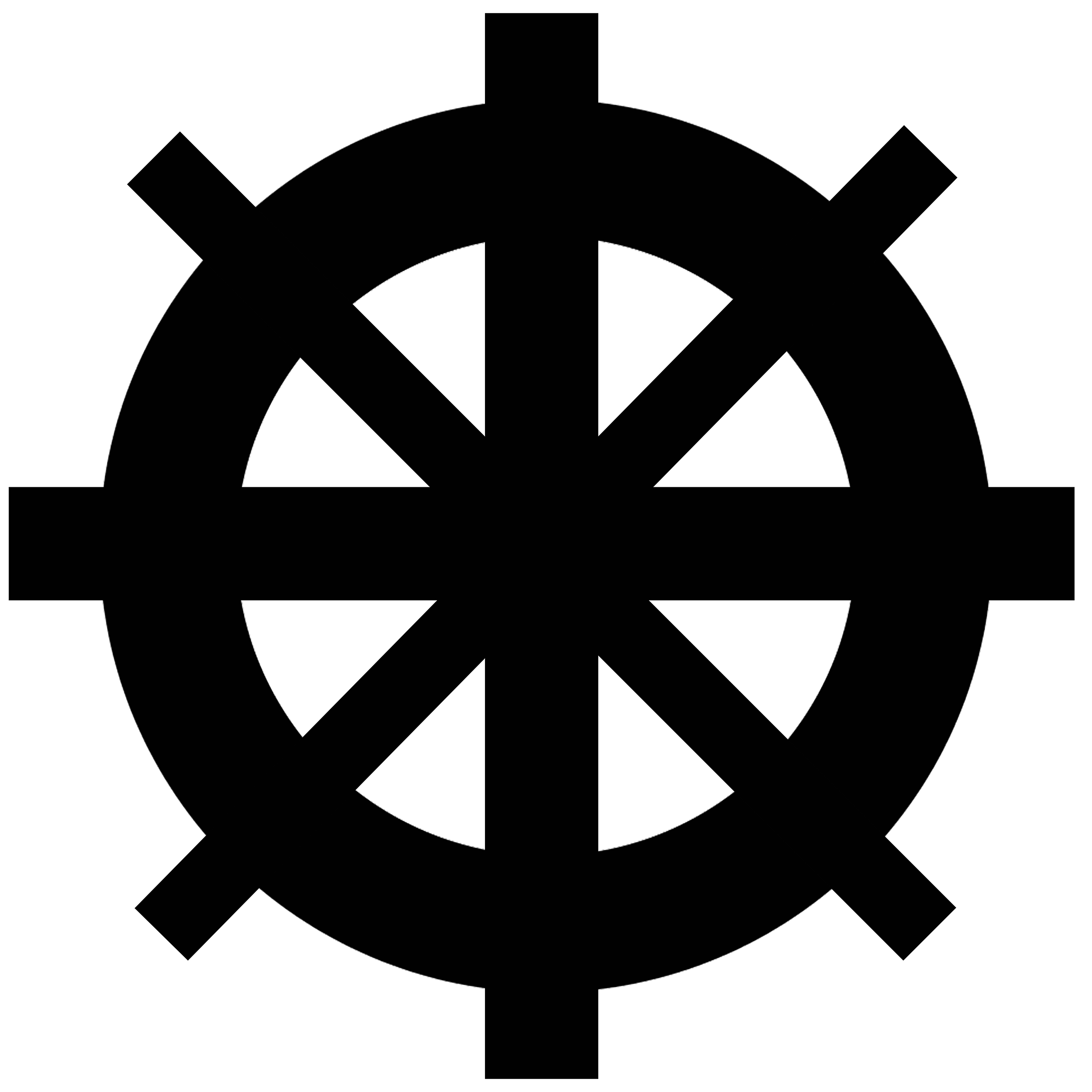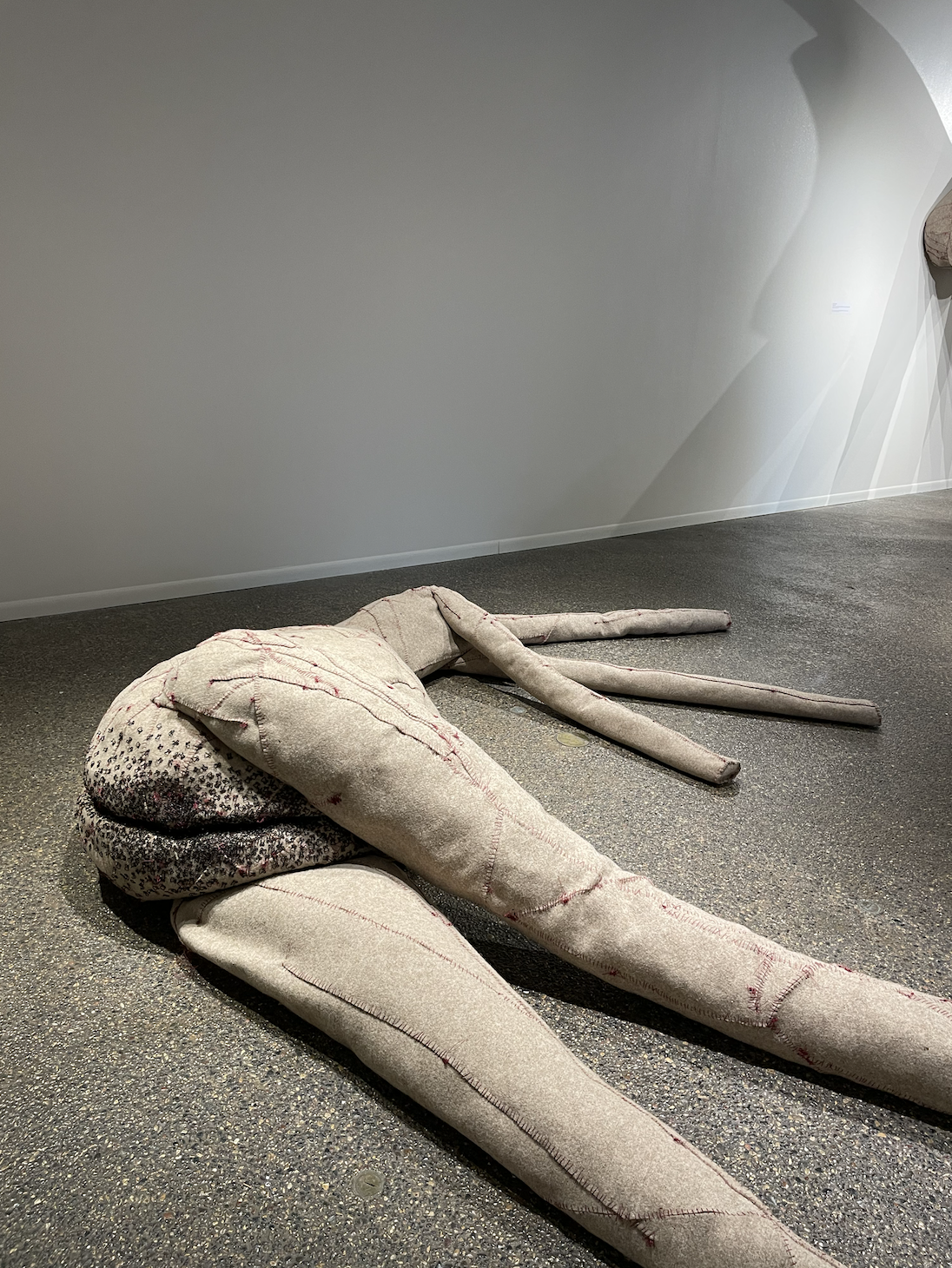Catherine G. Murphy Gallery welcomes new exhibits
Cover image (left to right): “Enfold” by Nicole Havekost and “The Shape of Memory” by Keren Kroul
By Mia Timlin
On Feb. 3, two new exhibits opened up in the Catherine G. Murphy Gallery. The shows “Bewitch” and “Even Now” will be open for viewing until March 17.
When you walk into the East Gallery, the first thing you notice is the voice. The 45 watercolor panels that make up Keren Kroul’s “The Shape of Memory” are accompanied by a recording of Kroul’s mother reading, in its original German, the Paul Celan poem “In the Daytime,” from which the exhibit gets its name — “Even Now.” When you manage to pull away from the stunning 30-foot-long, wall-climbing watercolor exhibit, you’ll see a circle of light on the ground, a shifting sky that plays on an 18-minute loop — a reference to Hebrew numerology’s “chai,” the number of life. The paintings, combined with the poem and floor sky projections — captured in a variety of locations, times and climates on film by Kroul’s relatives in an act of remembrance for her maternal grandmother — make up a tribute to Kroul’s family history and the complicated relationship between memory and grief.
In her artist statement, Kroul says that “The Shape of Memory,”“is inspired by memories of memories: my recollections of my grandmother’s stories, her experiences during the Holocaust, from displacement to concentration camp to refugee camp to freedom.”
Sky projection on the floor of “Even Now”
While each panel is distinctly its own, repeating elements run in and out of each section, spiraling straight from the center of the page or creeping up in corners. “Houses, synagogues, cobblestoned streets and tombs reference the town of Suceava, Romania, from where my grandmother and her family were forcibly expelled by the Nazis when she was a young girl,” Kroul’s statement says. “Saturated patterns are wallpapers and carpets. Arches and doorways disintegrate into jumbling masses. Dark braids belong to my grandmother’s twin sister, who perished from typhus by her side in the concentration camp.”
The work is also meant to reflect the nature of memory itself. “While some images are opaque, reflecting their solid presence in the mind, others are a watery wash, the dissolving of concrete places, lives, and eventually, memories,” Kroul’s statement reads. “Towering over the viewer, monumental in size while fragile in materiality, this work is a physical representation of the overwhelming helplessness I feel when confronted by the horror of this personal and historical legacy.”
Panoramic of “The Shape of Memory”
Across the hall in the West Gallery, Nicole Havekost’s “Bewitch” feels nearly alive. The exhibit is a collection of hand-stitched felt figures that range in size and position. When I tell Havekost that I feel like her figures are growing things that will somehow look different if I leave the gallery and come back, she agrees with me immediately, taking it a step further.
Left to right: “Amble,” “Sit” and “Pause” by Nicole Havekost
“I also feel like they have, like, their own needs and agenda and plan,” Havekost says. “I do. I also imagine that they’re doing things in there, when I’m not there, right? Or that you could come in and they’ve changed position or like, grown another boob, you know.”
Havekost’s figures are an exploration of the human body, which she puts under a lens of ferality. She says she wants to show that our bodies have needs that may not align with what we want.
“Supine” by Nicole Havekost
“There’s just sort of all these circumstances where I thought I could control this body or make it do or be something that I wanted,” she says. “And it just wasn’t gonna go there.”
She does this by making them almost animal-like. When you first look at one of her figures, you can fill in the blanks in your mind of what is happening. You can picture yourself performing the movement being portrayed. Your mind can comprehend at first glance that this is meant to be human. But then there’s the long necks lacking human heads and the cow udders and the canine-esque four-legged posture.
“Bewitch” gallery
Havekost says her work stems from humor. Of course, it’s an exploration of what it means to walk around in a body and a facet of self-discovery, but it’s also funny. Most of her figures utilize black hooks and eyes to emulate pubic hair growing on what she refers to as the “nasty bits,” and she doesn’t shy away from talking about the role that this quasi-nudity that is largely considered taboo plays in the overall message of the work.
“Sustain” by Nicole Havekost
“I do it partly because I think it's funny. Every time I can work the word ‘pubes’ into an artist talk I feel like I’ve been successful,” Havekost says. “For me as a person that was— you know, we didn’t address our bodies. And so part of all of this has been trying to discover what it is to live in this vessel and what’s so mysterious about it and what is so scary about it. And really I think throwing hooks and eyes in the nasty bits and, you know, having Dr. Seuss boobies, it makes it easier to talk about. It’s not a caricature, but because it has a little bit of fun, because it’s a little funny, it’s a little off-color, it’s an easier place to enter.”











![Listening to the future: “The [uncertain] Four Seasons” explores the impact of climate change](https://images.squarespace-cdn.com/content/v1/5d5d5bbe2cc2d000018127a9/1696800596906-9QYYK83U02CEYLE3KSH6/mia+cover+pic.png)
